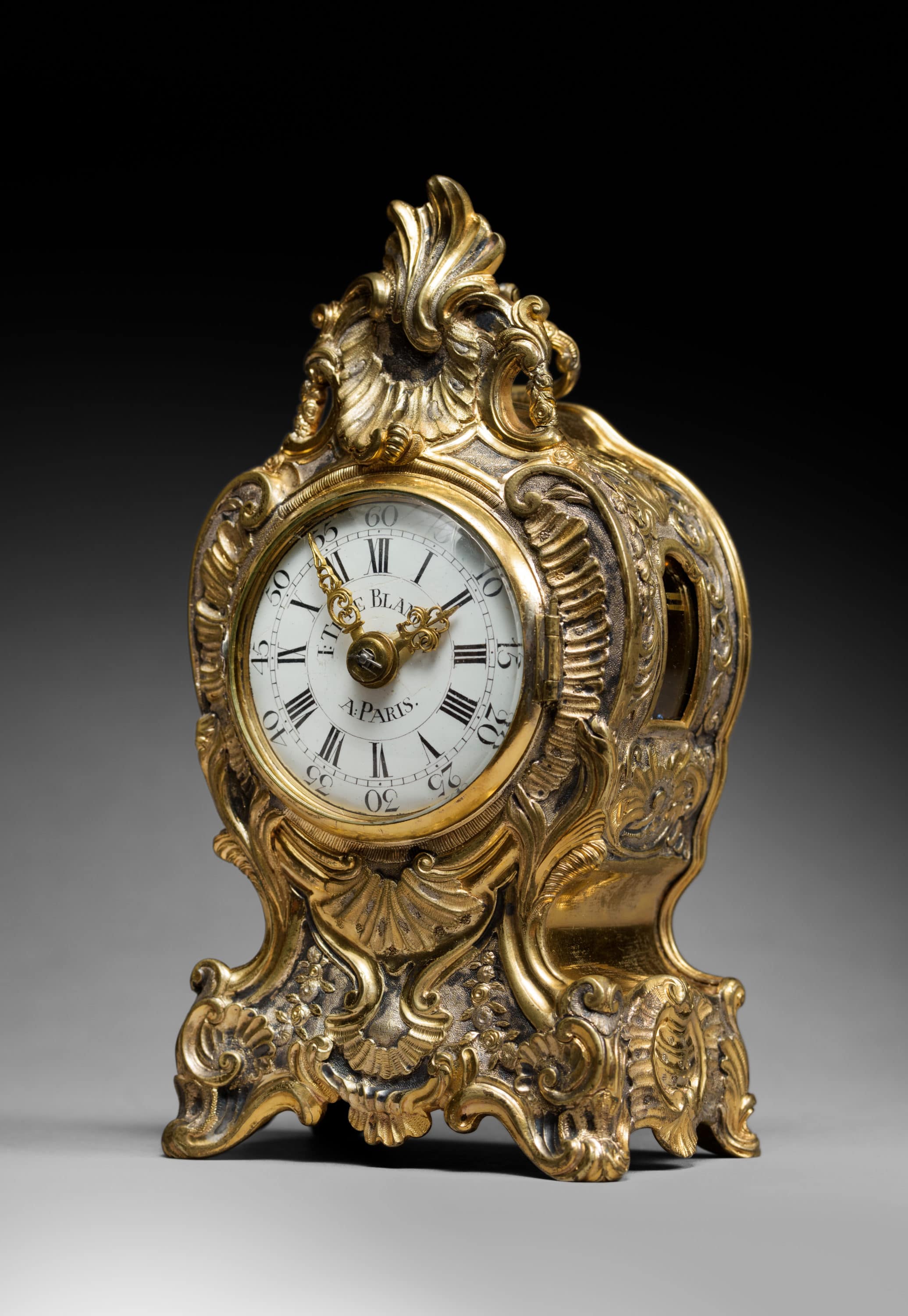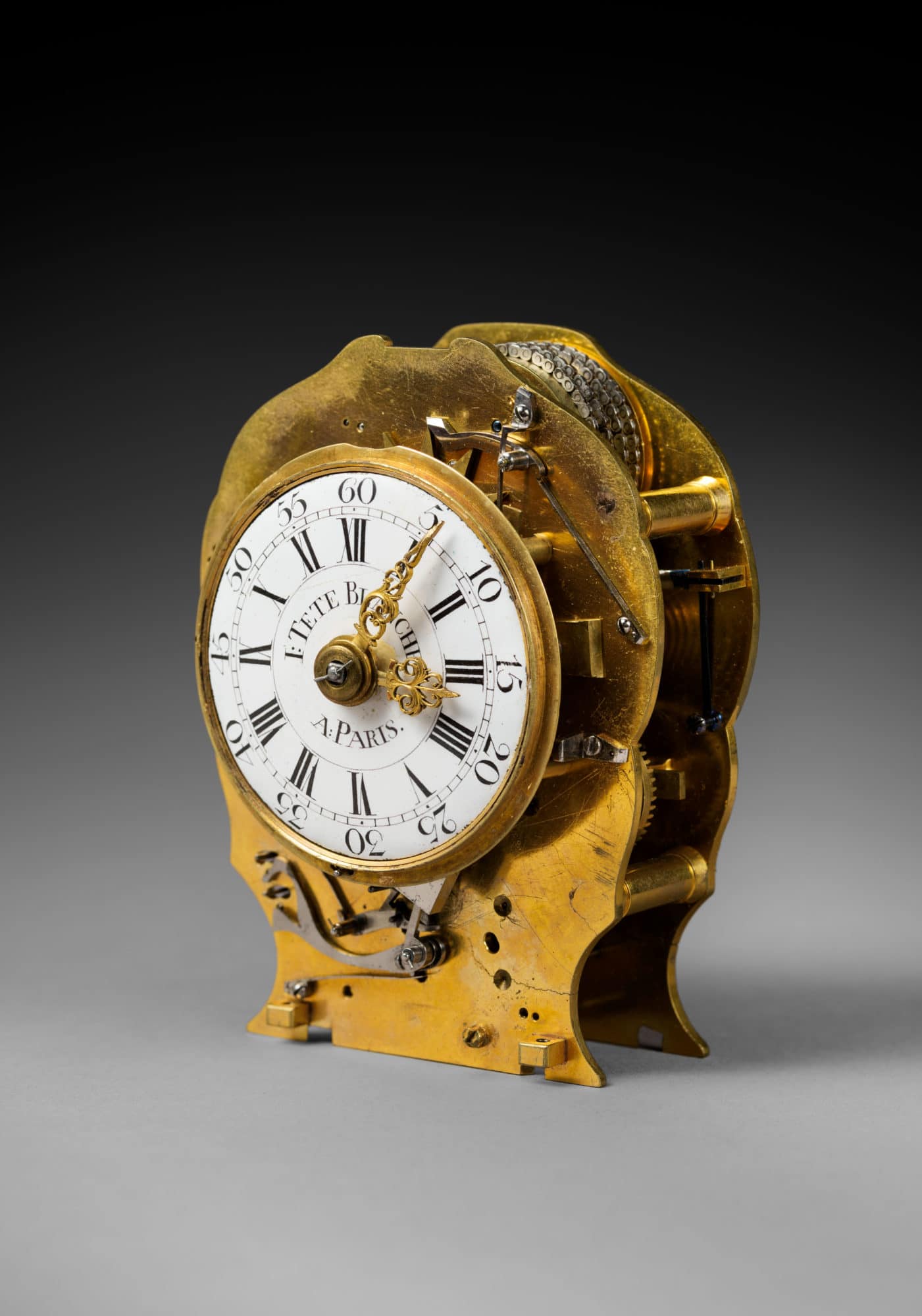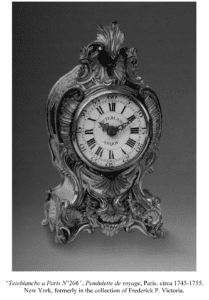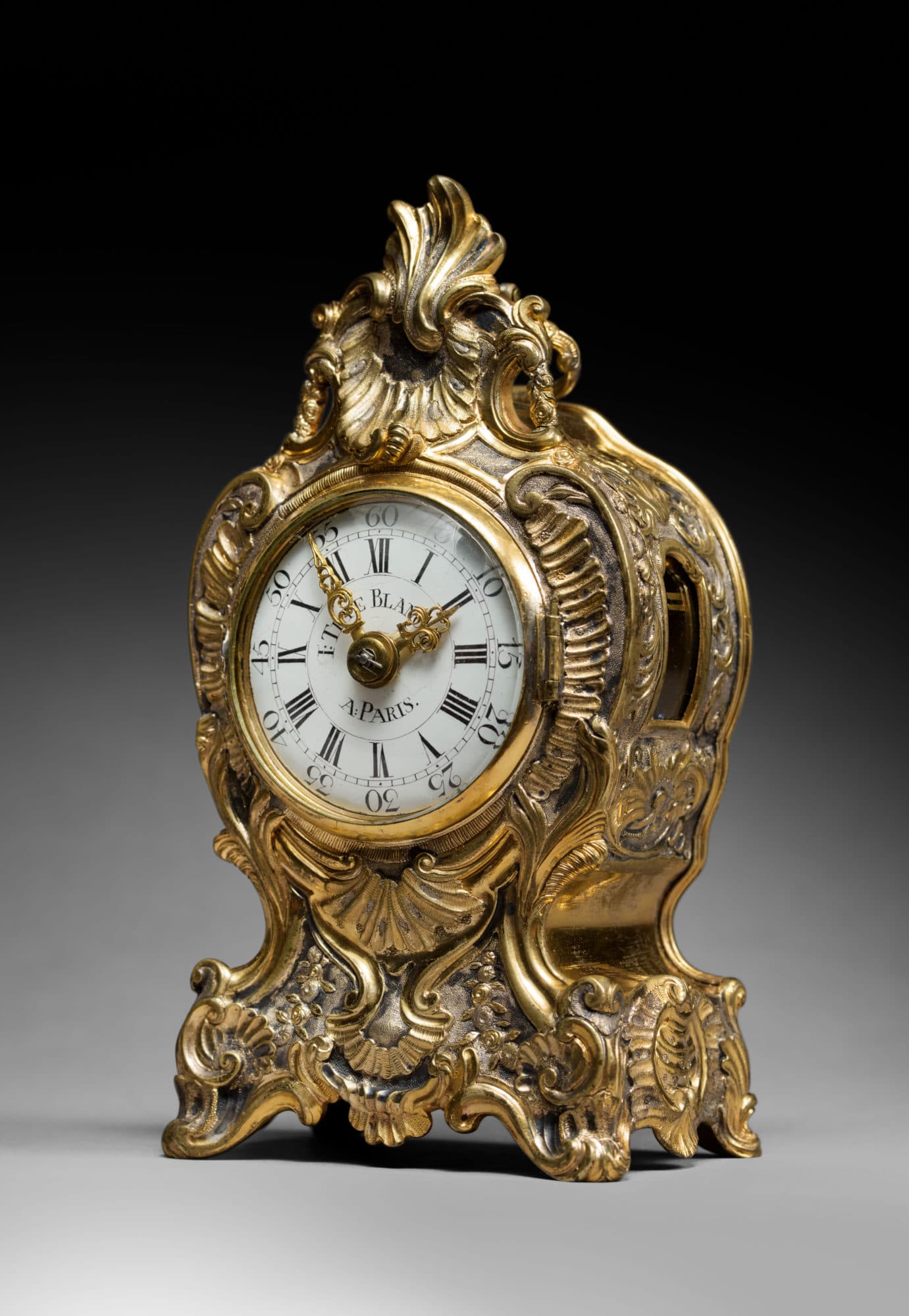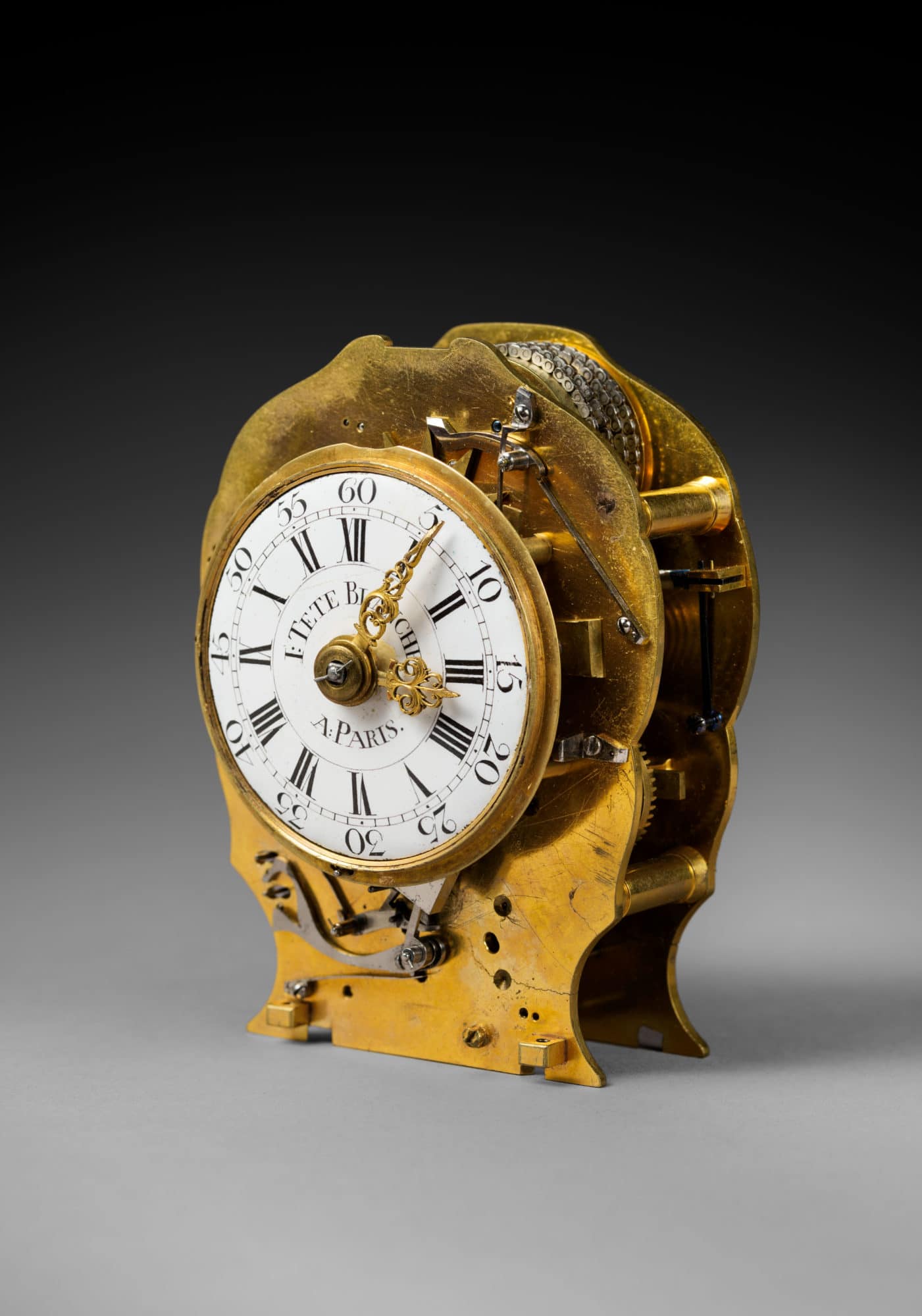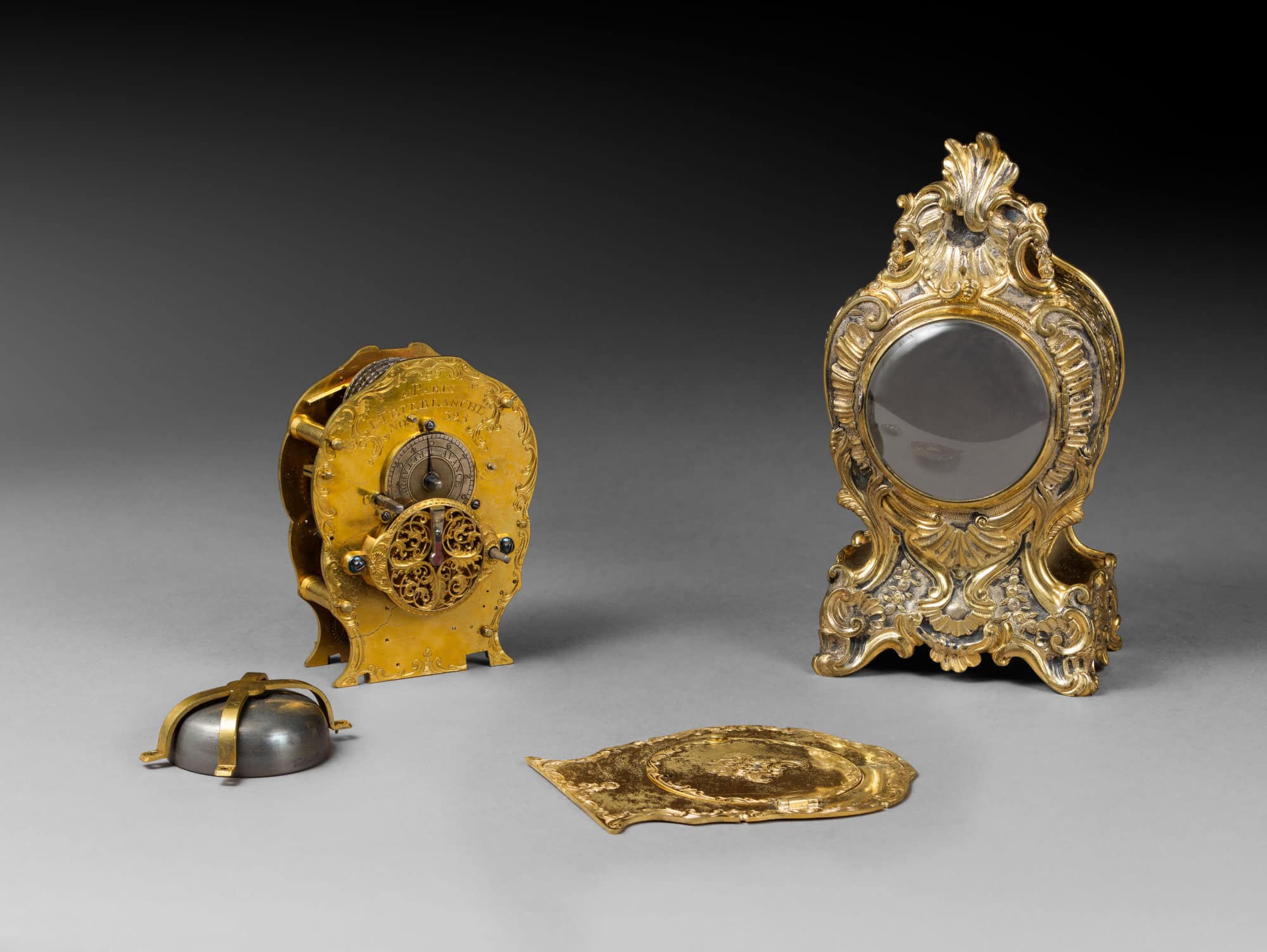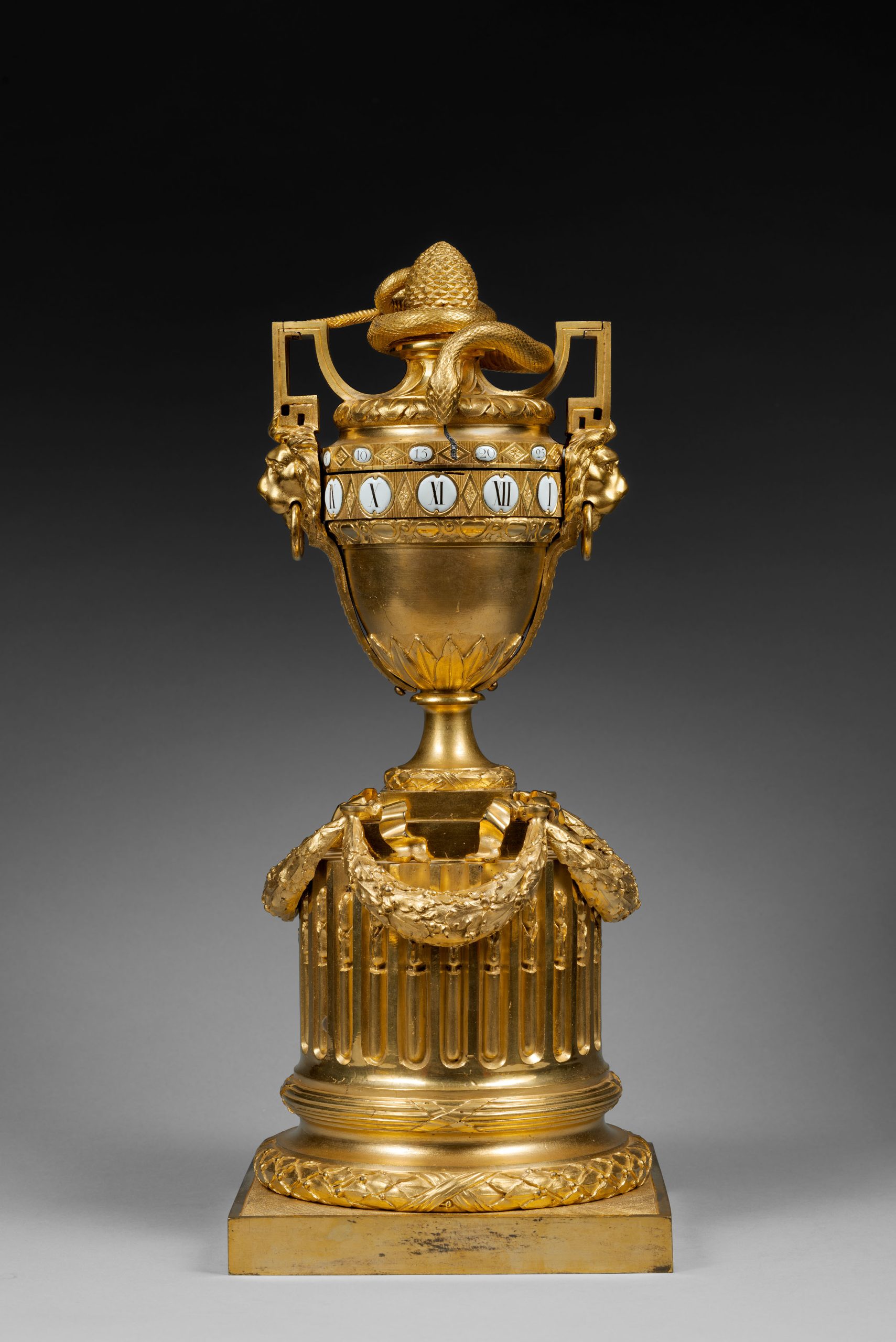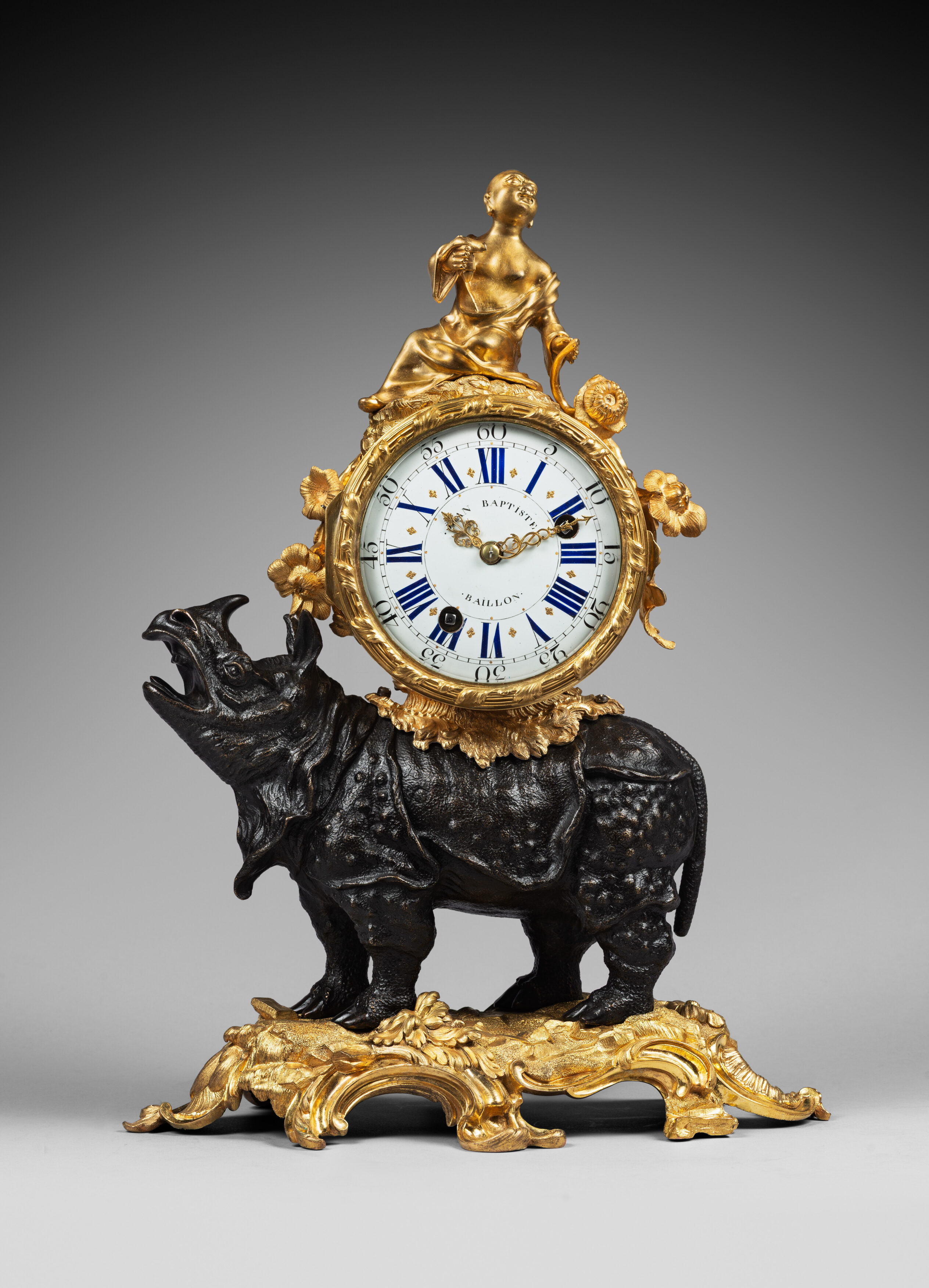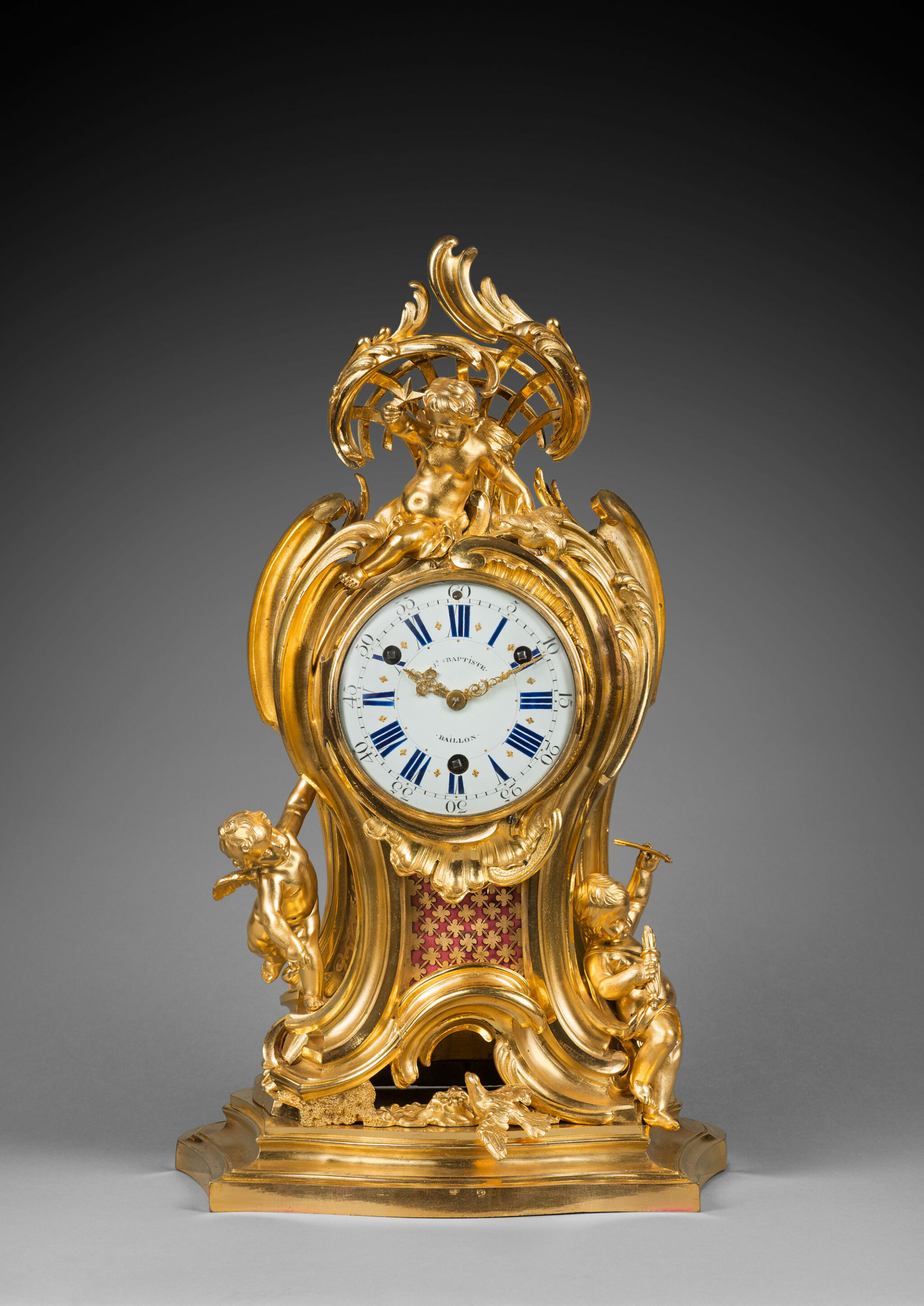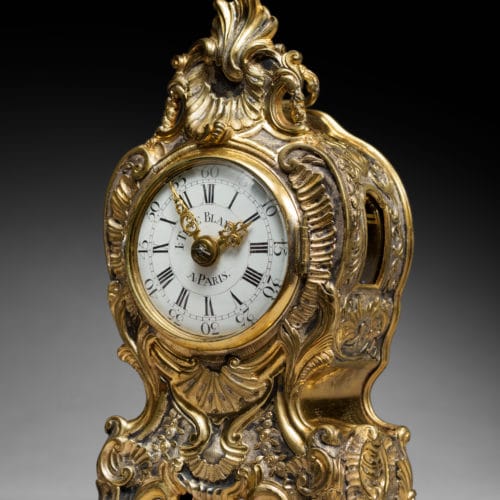Rare Rococo Gilt and Silvered Bronze Pendulette de Voyage
The round enamel dial, signed “I. TETEBLANCHE A PARIS”, indicates the Roman numeral hours and the Arabic five-minute intervals by means of two pierced gilt bronze hands. The movement, also signed and numbered “325”, is housed in a magnificent, finely chased and engraved gilt and silvered bronze rococo case that features shells, flower swags, C scrolls, palmettes, flowerets, and scrolling, with matted reserves. Surmounting the clock, a wide leaf motif is flanked by C scrolls and flower and leaf swags. Glazed apertures on each side reveal the movement. The clock is raised upon four small leaf and scroll feet.
Discover our entire collection of antique mantel clocks for sale online or at the gallery.
La Pendulerie is the specialist in fine and rare antique clocks, based in Paris.
Bibliography:
– C. Vincent, Exhibition catalogue Northern European Clocks in New York Collections, New York, The Metropolitan Museum of Art, 1972, p. 24
– W. Edey, Exhibition catalogue French Clocks in North American Collections, The Frick Collection, New York, 1982, p. 60-61, n° 59 (illustration)
This pendulette de voyage is a perfect illustration of the luxury to which important mid-18th century Parisian and European collectors aspired. Its fine chasing and extremely precise movement make it one of the most unusual horological creations of the Louis XV period. Surprisingly, the clockmaker who made this clock remains an unknown. All that is known about him is that he produced this type of travelling clock in the mid 18th century, and that an identical clock, with a movement numbered “206”, was formerly in the collection of Frederick P. Victoria in New York (illustrated in Jean-Dominique Augarde, Les ouvriers du Temps, La pendule à Paris de Louis XIV à Napoléon 1er, Genève, 1996, p. 95, figs. 57-58).
Despite our research in the Paris National Archives, this clockmaker remains mysterious. He is not mentioned in any horological dictionaries or reference works. However, the exceptional quality of his work, consisting solely of small travelling clocks, suggests that he had previously worked in Germany and stayed in Paris only a short time. This signature very likely refers to Joseph Weishaupt, a master clockmaker working in Carlsbad in the mid 18th century. “Têteblanche” would be the French version of his name; travelling horologists often translated their names into the language of the country they were working in.
